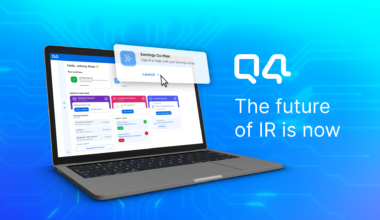Earnings season for the second calendar has wrapped up. Labor Day in the U.S. is less than a week away. We officially say goodbye to summer on September 22nd and hello to fall, which traditionally means the start of school, bakers making their favorite pies, and leaves beginning to turn color. While summer has been overshadowed by the pandemic, for Investor Relations teams, it doesn’t change their focus.
Late summer and early fall is one of the best times of the year to address board-level engagement with shareholders. Regardless of any historical proxy issues, you may have faced, now is the time for Investor Relations teams to focus on engaging with shareholder governance contacts.
Prepare for Each Cycle
Remember that every year is different. IR teams should assess issues that may be affecting their company in the upcoming year. It may be governance, diversity, succession planning, or executive compensation. IROs need to evaluate the proxy landscape and establish positions internally in advance.
A review of shareholders to determine where votes may be at risk should be conducted. Teams should also identify the appropriate executives and board members who may be needed to participate in meetings with investors. In addition to CEOs and CFOs, Legal or HR representation may be required. Current environmental and social factors may warrant the participation of a Chief Sustainability Officer or Chief Diversity Officer, if your company has named one. Board participants typically include the Lead Independent Director or the Head of the Compensation Committee.
Manage the Relationship
IR professionals are usually quite familiar with the analysts and portfolio managers of their largest shareholders. They also should know the key governance contacts at these firms, regardless of whether they are active or passive holders. Communicating with these contacts outside the normal proxy season (when they often are much too busy to handle introductions) is critical. You definitely don’t want to be trying to establish a relationship with them in the midst of a proxy crisis.
It is also important to monitor the voting patterns of key shareholders. IR teams should know which advisors their largest holders follow, what their historical voting trends have been, whether they have any history of siding with activists, and what the role of the portfolio manager may be in the decision-making process for casting votes. Proxy solicitation firms are usually the source of key insights in these areas.
Engage with Contacts
Fall is the key timeframe to engage with governance contacts. As summer comes to an end, institutional investors availability is at its highest. Outreach should include topics to be covered and expected attendees from the company. In today’s environment, phone or video is the likely format, but the communication channel should be tailored to the needs and preferences of the investor. Your discussion should be focused on board-level issues rather than operational strategy or financial earnings results.
There should be a clear connection between the company’s strategy for long-term value creation and the company’s approach to key proxy topics. It is helpful to have a clear narrative and participants should be comprehensively briefed for expected Q&A. In soliciting shareholders for their input and alternative views, recognize that they will want a response, they’ll expect the company to follow-up with them, and they will want to see progress reporting on any commitments that have been made.
It can be nearly impossible to resolve a problem if you find out about it when you start counting ballots. Off-cycle governance engagement is the solution. Of course, any materials and new messaging you use to communicate positions should be disclosed appropriately. Additionally, if you don’t yet have a shareholder engagement policy, you may want to consider adding one to the IR section of your company website. Spending time on this now will position you to be very effective in the fall and will prevent an avalanche of problems this winter. Click here to find out how the Q4 IRSP team can help or email me directly at john.nunziati@q4inc.com.


